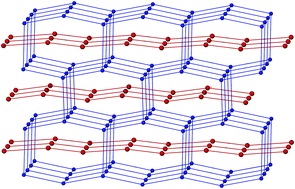Isomerism and interpenetration in hydrogen-bonded network structures†
Abstract
The crystal structures of N,N-dimethylguanidinium salts based on two naphthalenedisulfonate isomers have revealed that the 1,5-disulfonate forms a three-dimensional hydrogen-bonded network whereas the 2,6-disulfonate forms an unusual structure containing interpenetrated two- and three-dimensional hydrogen-bonded networks.


 Please wait while we load your content...
Please wait while we load your content...